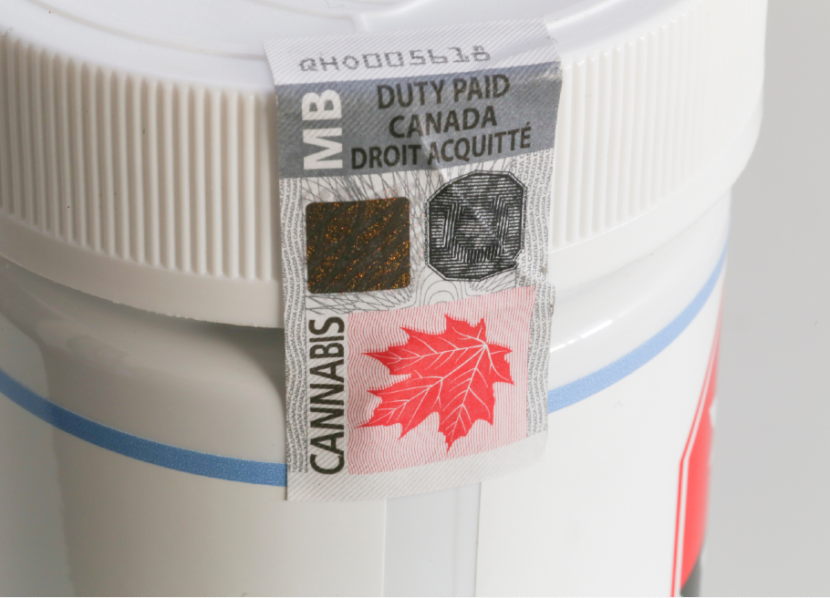Expanding Edibles into Canada: Key Considerations for US Cannabis Companies
By Tina Chang
On October 17, 2018, the Government of Canada legalized and strictly regulated the production, distribution, sale, import, export, and possession of cannabis for adults of legal age. This act of legalization has created an uproar around the world and brought new perspectives into the recreational cannabis space. It has been a rocky but exciting few years since legalization, with most conversations highlighting the differences between recreational cannabis regulations in Canada and the United States and the hope that someday cannabis could be sold across borders.
It has been a rocky but exciting few years since legalization, with most conversations highlighting the differences between recreational cannabis regulations in Canada and the United States and the hope that someday cannabis could be sold across borders.
In the United States, the use and possession of cannabis is illegal under federal law for any purpose by way of the Controlled Substances Act of 1970 (CSA). However, there are a total of 23 states, and Washington DC, that have legalized recreational usage of cannabis. Each state has its own interpretations and definitions of what constitutes a safe cannabis product. Some standard requirements exist around pesticides, residual solvents, microbiology, and cannabinoid profiles. Some standard requirements exist around pesticides, residual solvents, microbiology, and cannabinoid profiles. However, product quality varies widely from state to state. For example, the maximum Tetrahydrocannabinol (THC) content allowed in a pack of cannabis-infused edibles ranges widely from 50 mg up to 200 mg. Each state has a different registration and licensing process, too. Due to the U.S.’s lack of standardized federal regulations, consumers and producers are often confused, which prevents the promotion of safe cannabis products.
In Canada, Cannabis Regulation SOR/2018-144 was built based on a few principles: protecting youth, protecting public health, and reducing criminal activities. SOR/2018-144 defines each class of cannabis, licensing requirements, physical security measures, good production practices, required testing, labeling, and packaging requirements. In addition, this Canadian regulation provides a standardized guideline to which all Canadian cannabis producers must comply. Further, it provides a common language that every producer and program can use.
If you are a quality or regulatory affairs professional, you probably have an opinion on whether you prefer the systems in the United States or Canada. The Canadian system is similar to the certification schemes that fall under the Global Food Safety Initiative, or GFSI. The GFSI program has a standardized principle, and manufacturers can select the system they’d like to follow (e.g., BRC-GS, SQF, or FSSC22000) depending on the company’s products and processes. Licensed manufacturers making cannabis-infused products select the regulations that suit their products, including seed, fresh cannabis, dried cannabis, cannabis extract, topical products, or edibles. In the United States, it is similar to where the manufacturer can choose its approach (GMP, HACCP, etc.) as long as it meets the required laws.
Pros and Cons of Regulatory Framework
In Canada, although the guidelines are standardized at the federal level, it does take longer to review and update any required legal changes to ensure that public health is protected. As the cannabis industry continues to evolve, there are times when regulations themselves can become a roadblock for licensed producers. However, in the U.S., each state can monitor and update the requirements as needed – though the lack of national guidelines can create public confusion and stop sales across state borders.
Legalizing recreational cannabis at the federal level in the United States has been a longstanding debate. Significant resources and time are required to develop and pass national regulations into law. The taxation component is critical for producers as it can impact profit margins and potentially increase the retail price of cannabis products. Until cannabis becomes federally legal in the United States, the government will continue to regulate it as a controlled substance, which limits growth potential as licensed producers often have to add a whole new manufacturing facility or pursue contract manufacturing to operate in multiple localities.
Key factors in evaluating whether you want to expand your U.S. cannabis operations into Canada include:
1. Make sure you have reliable partners with a good reputation. Just because a company can manufacture the product at the lowest cost does not automatically mean they’re a good partner. It is essential to ensure your partners have integrity, are ethical, and that product and consumer safety are top priorities.
2. Conduct research and understand the market dynamics in Canada. The market in Canada is still really young, and consumers are often eager to try new products.
3. Understand the Canadian Cannabis Regulations and determine your best product offers. If you wish to maintain the same product portfolio, you must ensure all of your current ingredients can be used in products made in Canada.
4. Product packaging and labeling requirements. The Canadian regulations are much tighter. For example, product containers must be opaque or translucent. The labels must follow the defined color, font, spacing, and the exact location of information on the label. Be prepared to rework your packaging – there won’t be much room for artistic creativity.
5. Tax requirements vary from province to province, territory to territory, and at the federal level. Each province and territory has different tax requirements and calculations. It would be best to consider this when deciding where to launch your products so you can realize the most profit.
The cannabis legalization journey in Canada has been filled with excitement, bumps, growth, and learning – and they’re not done yet. As the industry grows stronger and matures, there will be more opportunities to meet consumer demand and make top-quality cannabis products that are safe for the market.
About the author:
Tina Chang is the managing director of operations and quality at Olli Brands, Inc. She has 15 years of experience ranging across food industry sectors and in roles in regulatory, quality control and assurance, research and development, and operations. For the past four years, she’s been integral in launching two cannabis start-ups focused on cannabis edibles. She graduated from McMaster University with a bachelor’s degree in medical and health physics.

-
 FeaturedRisk management
The Cost of a Breach: What a Cyberattack Could Mean for Food Safety Recalls
FeaturedRisk management
The Cost of a Breach: What a Cyberattack Could Mean for Food Safety Recalls
-
 FeaturedRisk management
Securing the Food Chain: How ISO/IEC 27001 Strengthens Cybersecurity
FeaturedRisk management
Securing the Food Chain: How ISO/IEC 27001 Strengthens Cybersecurity
-
 FeaturedRisk management
Revolutionizing Food Safety Training: Breaking Out of the “Check-the-Box” Mentality
FeaturedRisk management
Revolutionizing Food Safety Training: Breaking Out of the “Check-the-Box” Mentality
-
 GFSI Standards
GFSI 2025: Building Trust, Tech-Forward Solutions, and Global Unity in Food Safety
GFSI Standards
GFSI 2025: Building Trust, Tech-Forward Solutions, and Global Unity in Food Safety
-
 FeaturedFood Safety
Integrated Pest Management: Strategies to Protect Your Brand’s Reputation
FeaturedFood Safety
Integrated Pest Management: Strategies to Protect Your Brand’s Reputation
-
 FeaturedFood Safety Culture & Training
No Open Door Policy: Challenges That Impact Pest Control in Food Processing Plants
FeaturedFood Safety Culture & Training
No Open Door Policy: Challenges That Impact Pest Control in Food Processing Plants




